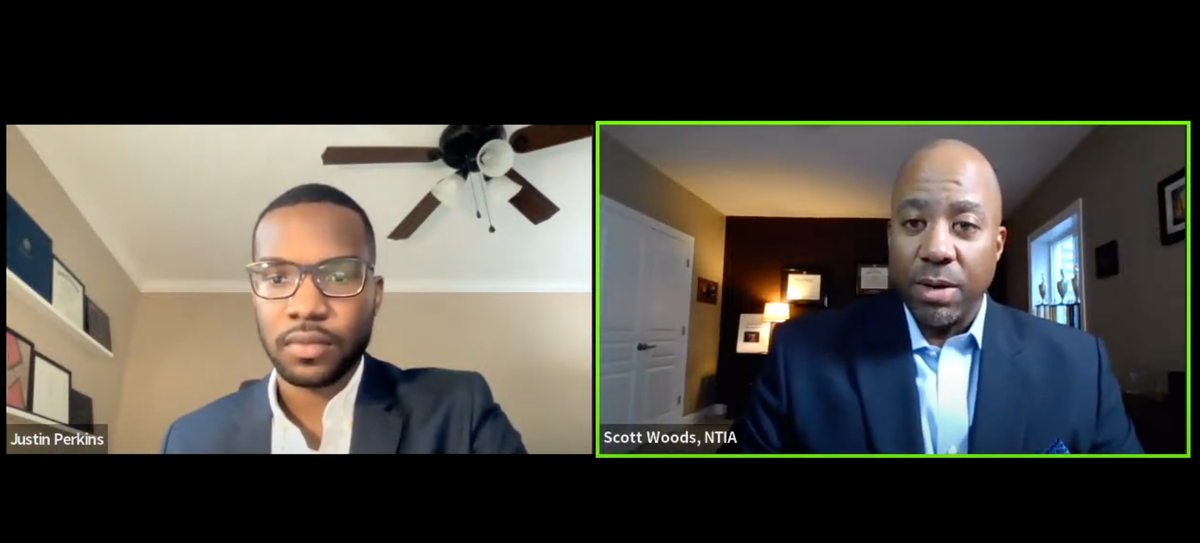NTIA Official Says Rural Broadband Funds Do Not Disqualify Area from New Broadband Monies
While NTIA will interpret grant funding under the law, it’s up to states to determine where to allocate money.

January 19, 2022 – The federal government agency charged with the task of doling out the $42.5 billion of broadband infrastructure funding hasn’t ruled out the idea of letting grant applicants use the money allocated to them from the Infrastructure, Investment and Jobs Act to cover areas that will also be covered from grants given to projects from the Rural Digital Opportunity Fund.
The Commerce Department’s Scott D. Woods said the “policy team is working on [this]” and to “stay tuned” to further announcements. As a general rule, areas don’t “have federal assets for the similar purposes in the same area,” but there are “nuances to that.”
Woods is the National Telecommunications and Information Administration’s director of the Office of Minority Broadband Initiatives at the agency’s Office of Internet Connectivity and Growth.
He made the remark during a recent “Ask Me Anything” interview with Broadband Breakfast Reporter Justin Perkins. Broadband Breakfast is a sister publication to Broadband.Money and is a privately-run media and conference company headquartered in Washington, D.C.
Grant applicants concerned about this specific issue should submit questions about it for the record in comments they should submit to the NTIA, Woods said. All comments are due February 4, 2022.
The Federal Register notice and instructions on how to file comments is here.
More information, including the NTIA’s scoring criteria for grant applications, will be found in the Notice of Funding Opportunity coming out in May.
Doug Dawson, an influential broadband consultant of CCG Consulting (and blogger) wrote a blog post early January implying that RDOF covered areas wouldn’t be eligible for IIJA grant funding.
During the AMA, Woods took questions from the Broadband.Money community and discussed IIJA’s compatibility with RDOF, expectations for state plans, private-public partnerships, and the role of the community.
While the NTIA will be interpreting the terms of the grant funding as laid out in the IIJA, it’s up to the states to determine where to allocate the money.
The “state plans…ultimately have to reflect the needs of the unserved [and] underserved communities,” Woods said.
Perkins also emphasized how important it is “for the communities to give their input sooner rather than later, so that the NTIA can develop regulations that are really going to reflect the needs that these broadband programs are asking for.”
Despite the expedited timetable laid out in the IIJA, Woods said that states should be ready to submit rigorously-planned proposals to the NTIA when they ask for federal funding for their five-year broadband plans.
Some states don’t have any formal broadband offices in place, but most already have some basic organizational structures. Woods said that the NTIA is there to help states that might need more hand-holding through the grant application process.
Role of public-private partnerships
Woods also discussed the importance of private-public partnerships.
These partnerships will help with infrastructure, as well as “equity, inclusion, [and] adoption,” he said.
Public-private partnerships are built on “trust and transparency,” said Woods.
“There’s a lot of work to do, as well,” said Woods. “Trust is based on your words and your actions.”
One community member asked when the NTIA will announce its decisions on its $288 million for broadband infrastructure program, a separate broadband program funded under the 2021 appropriation bill. Woods said to check NTIA’s website, and that these announcements will be coming “soon.”
Woods also emphasized the importance of the role of the community to the forthcoming years-long broadband buildout. Everyone need to “provide information, to provide data, to provide feedback on what’s needed in the community.”
Instead of favoring one technology over another, such as fiber over wireless, the NTIA is going to “leave it to the states…to adopt what best works for them and their communities.”
“There’s a role for all technologies,” he said.
A version of this piece was originally published on Broadband.Money on January 19, 2022. You can find out more about Broadband.Money‘s past and future events and AMAs here. Don’t forget to come and participate in our discussion on Friday over who should receive IIJA money, in your opinion, and our Friday, January 28, 2022, Ask Me Anything! event With Ben Bawtree-Jobson, CEO @ SiFI Networks.








